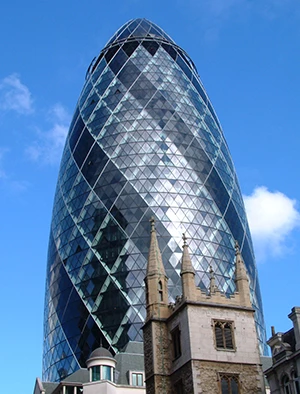Get an instant valuation here or contact one of our offices


Aldgate, as the name suggests, was home to one of London’s seven main gates that allowed people to come and go through the wall that encircled the city back in Roman times. While the gate has long since been demolished, still in existence is the historic Aldgate Pump, located on the junction where Aldgate meets Fenchurch Street and Leadenhall Street. The pump itself, with its distinctive wolf head design, dates back to 1876, but a well has existed on the site since the early 1200s. The site became infamous as the source of the Aldgate Pump Epidemic where several hundred people died as a result of drinking polluted water (believed to be contaminated by decaying cadavers in nearby graveyards). Today, however, Aldgate is thankfully better known for being London’s insurance capital, with several of the major broking firms and underwriters based here.
However, despite its reputation as a business district, it has recently seen an increase in residential development to accommodate an influx of affluent, young professionals attracted by the city lifestyle. Also giving the area a new lease of life is the major redevelopment that recently took place around St Botolph's Church to create Aldgate Square (now one of the largest public spaces in the Square Mile).
Located in Zone 1, Aldgate transport links provide direct routes throughout the capital. Aldgate station is on the Circle, Metropolitan and Hammersmith & City lines, while Aldgate East station is on the District and Hammersmith & City Lines.
Schools in Aldgate include the English Martyrs Roman Catholic Primary School, rated good by Ofsted and The Aldgate School, formerly the Sir John Cass's Foundation Primary School, which has an outstanding Ofsted rating. Secondary students attend the Mulberry School for Girls, again rated outstanding or the Bishop Challoner Catholic Federation of Schools that consists of three schools, a boy’s, a girl’s and a sixth form, with varying Osfted ratings.
When it comes to attractions in Aldgate, Norman Foster's skyscraper, 30 St Mary Axe (also known as 'the Gherkin'), is hard to miss, being widely regarded as one of the world’s most iconic buildings. Why not treat yourself to a meal at Searcys Helix Restaurant while you’re there, as well as offering a fine dining experience it also has the most spectacular panoramic views of the city.
On Aldgate High Street you'll find a great selection of cafes, restaurants, bars and pubs, while Leadenhall Market, Petticoat Lane Market and Brick Lane Market - with its huge selection of independent shops and eateries - are all close by. Lovers of culture should definitely pay a visit to the Whitechapel Art Gallery, famous for its groundbreaking contemporary art exhibitions.
508 Roman Road
Bow
London
E3 5LU
020 8102 1236
london@butlerandstag.com
Aldgate was the eastern-most gateway through the London Wall leading from the City of London to Whitechapel and the East End of London. It gives its name to a City ward bounded by White Kennet Street in the north and Crutched Friars in the south, taking in Leadenhall and Fenchurch Streets, which remain principal thoroughfares through the City, each splitting from the short street named Aldgate that connects to Aldgate High Street. The road is situated 2.3 miles (4 km) east north-east of Charing Cross.
John Cass's school, where a plaque records the former placement of London Wall, is sited on the north side of Aldgate (the street).
Today the area is home to one of the most important financial centres in the world and to London's long-established maritime industry, including the historic Baltic Exchange and Lloyd's Register. The Baltic Exchange's old building in St Mary Axe was destroyed by an IRA bomb on 10 April 1992 and has been replaced by the Swiss Re "gherkin", now one of London's most striking and well-known landmarks. The Baltic is now next door to its former site at number 38 St Mary Axe.

“ The service provided by the entire team at Butler and Stag is fantastic. From purchasing a plot, to the sale of the properties was run fantastically. Very professional outfit and a pleasure to work with. We certainly will be using Butler and Stag again in the near future. ”
Read more reviews
★★★★★ 4.9 Bow (London Office)
★★★★★ 5.0 Theydon Bois (West Essex Office)